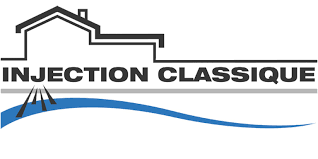Home Fence installation Guide
In the realm of property enhancement and security, few features are as essential and versatile as a well-constructed fence. Whether it’s for delineating boundaries, ensuring privacy, or adding aesthetic appeal, a fence serves multiple purposes. However, installing a fence involves more than merely erecting panels or posts. It requires careful planning, precise execution, and a keen eye for both functionality and design. Here’s a comprehensive guide to roberts custom builders installation, covering key aspects from preparation to finishing touches.
- Planning and Preparation: Before delving into the installation process, thorough planning is imperative. Start by determining the purpose of the fence—whether it’s for security, privacy, aesthetics, or a combination thereof. Assess property boundaries and check local regulations and zoning laws regarding fence height, materials, and setback requirements.
- Choosing the Right Materials: Selecting suitable fence materials from https://abacusfence.com/fence-installation-chestermere is crucial for a durable and visually appealing fence. Common options include wood, vinyl, aluminum, wrought iron, and chain-link. Consider factors such as maintenance requirements, durability, cost, and compatibility with the property’s architectural style.
- Gathering Tools and Materials: Ensure you have all the necessary tools and materials before commencing installation. Typical tools may include a post hole digger, level, tape measure, saw, hammer, nails, screws, and concrete mix. Additionally, purchase the chosen fencing materials in the required quantities, along with any accessories like gates and hinges.
- Setting Post Layout: Accurate post placement is essential for the stability and alignment of the fence. Use a string line or stakes to mark the layout, ensuring consistent spacing between posts. Dig post holes to the appropriate depth and diameter, factoring in the frost line and soil composition for stability.
- Installing Fence Panels or Rails: Depending on the chosen fencing style, attach panels or rails to the posts using appropriate fasteners. Ensure panels are level and plumb, adjusting as necessary. For wooden fences, consider pre-staining or treating the materials to enhance longevity and resistance to weathering.
- Adding Gates and Hardware: Gate installation requires precision to ensure smooth operation and proper alignment. Install gate posts securely, allowing sufficient clearance for opening and closing. Attach hinges, latches, and other hardware according to manufacturer instructions, ensuring functionality and security.
- Applying Finishing Touches: Once the primary installation is complete, attend to finishing touches to enhance the fence’s appearance and functionality. This may include painting or staining wooden fences, adding decorative elements, or incorporating landscaping features around the perimeter.
- Regular Maintenance: To prolong the lifespan of the fence and maintain its visual appeal, regular maintenance is essential. Inspect for any damage, loose components, or signs of wear periodically. Depending on the material, tasks such as cleaning, repainting, or resealing may be necessary to combat weathering and deterioration.
- Respecting Neighbors and Regulations: Throughout the installation process, maintain open communication with neighboring property owners to address any concerns or potential boundary issues. Adhere to local regulations and obtain necessary permits to avoid any legal complications.
In conclusion, fence installation is a multifaceted endeavor that requires careful consideration of various factors, from planning and material selection to execution and maintenance. By following these guidelines and paying attention to detail, you can ensure the successful installation of a fence that not only enhances security and privacy but also adds value and curb appeal to your property.
